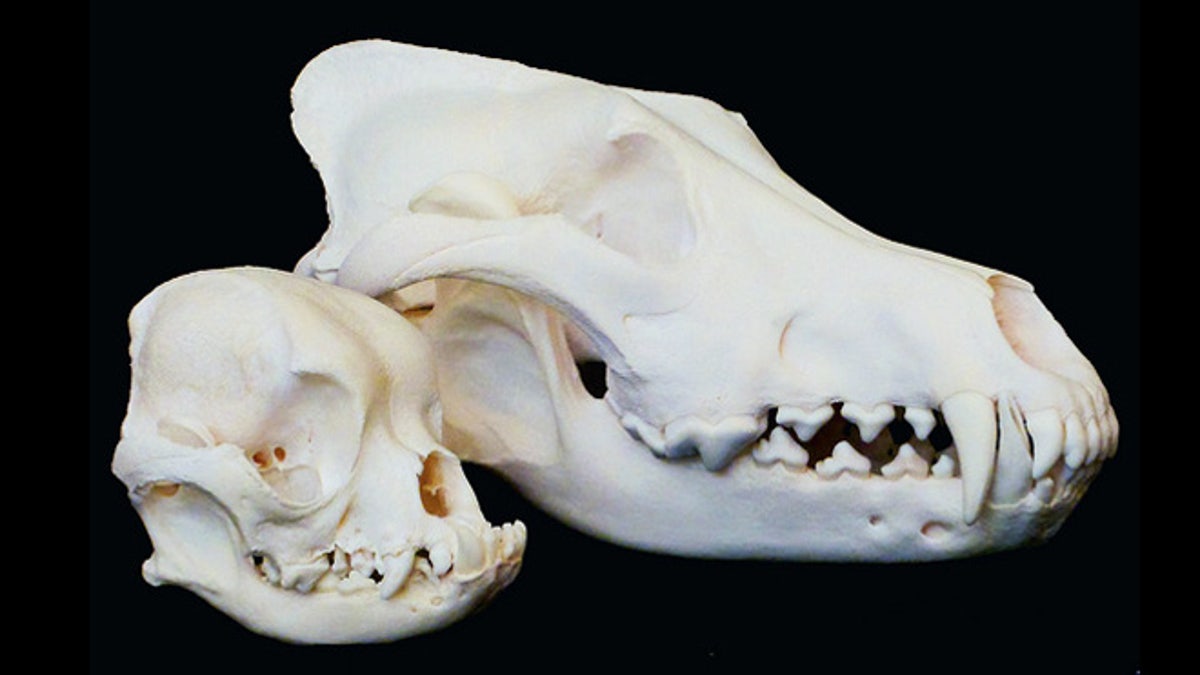
Dog species (Canis familiaris) have vastly different skull shapes, from the pug (foreground) to the gray wolf (background). Studies of the genetics that control these shapes could apply to humans, too, scientists say. (Jeff Schoenebeck)
Thanks to human breeders, dogs exhibit an impressive variety of skull shapes. Studying the genes that determine these shapes could provide insight into human skull development and craniofacial disorders, scientists say.
In a new study, scientists detail the biological and historical origins of dog skull shapes, highlighting some of the genetic developments that gave rise to different breeds.
[pullquote]
"Sometime during the Paleolithic," the researchers write in the February issue of the journal Genetics, "a remarkable transformation occurred. Small numbers of gray wolves adopted a new pack master — humans." Over the years, dog fanciers and breeders have tinkered with those canines so much that more than 400 dog breeds exist today worldwide.
Much of the variation is in skull characteristics. "Dogs can serve as a model for skull growth and shape determination, because the genetic conservation between dogs and humans makes it highly likely that craniofacial development is regulated similarly between both species," study co-author Jeffrey Schoenebeck of the National Institutes of Health said in a statement. [See The 10 Most Popular Dog Breeds]
From the "pushed-in" face of a bulldog to the elongated snout of the Afghan, dog craniums run the gamut. Skull shape genetics is complex, and multiple genes are often involved. Researchers have begun to pick apart the genes that are responsible for shapes that resemble human conditions like brachycephaly (a flattened head) and dolichocephaly (an elongated head). Researchers have also studied traits that fit neither description, such as the Chihuahua's rounded skull or the bull terrier's downward angled muzzle. By comparing genetic variations among these skull shapes, the team can tease out which genes may be responsible for a flattened head, for instance.
While the researchers note wryly, "the dog model is young in human years," they say that understanding these genes and their interactions might help explain craniofacial defects in humans.
Copyright 2013 LiveScience, a TechMediaNetwork company. All rights reserved. This material may not be published, broadcast, rewritten or redistributed.




















